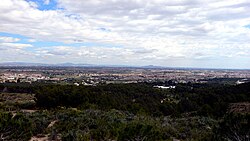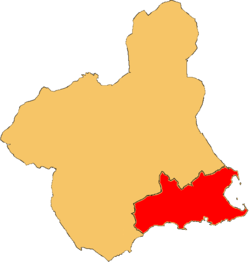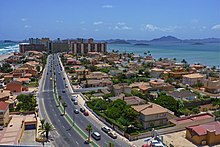
In Spain, a comarca is either a traditional territorial division without any formal basis, or a group of municipalities, legally defined by an autonomous community for the purpose of providing common local government services. In English, a comarca is equivalent to a district, county, area or zone.
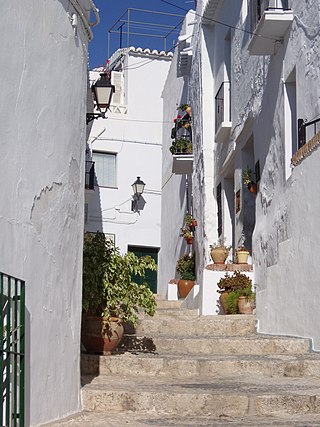
Axarquía is a comarca of Andalusia in southern Spain. It is the wedge-shaped area east of Málaga. Its name is traced back to Arabic الشرقية. It extends along the coast and inland. Its coastal towns make up the Costa del Sol Oriental - one of the sunniest places in mainland Spain with the average of 320 sunny days a year. The natives of the region are called axárquicos.

The Baix Vinalopó is a comarca in the province of Alicante. It is bordered by the comarques of Vinalopó Mitjà and Alacantí on the north and Vega Baja del Segura on the south. Its capital is the city of Elche/Elx, with a population of 232,517 in 2019. The other major towns in the comarca are Crevillent/Crevillente and Santa Pola.
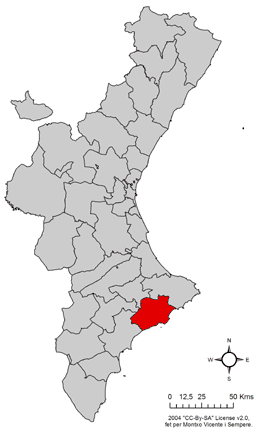
Marina Baixa or Spanish: Marina Baja is a comarca in the Valencian Community, Spain. It is bordered by the comarques of Comtat on the northwest, Marina Alta on the northeast, Alacantí and Alcoià on the west and the Mediterranean Sea on the east.
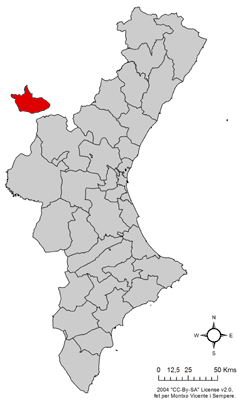
Rincón de Ademuz is a Spanish comarca constituted as an exclave of both the Valencian Community and the Valencia province located between the provinces of Cuenca and Teruel (Aragon). It is part of the Spanish-speaking area in the Valencian Community.

Colmenar Viejo is a town and municipality of about 48,614 inhabitants, located in the Community of Madrid, Spain, 30 kilometers north of Madrid on the M-607 motorway. It belongs to the comarca of Cuenca Alta del Manzanares.

Níjar is a Spanish municipality in the province of Almería, Andalusia. It lies in the eastern part of Almería, in the Sierra de Alhamilla and the south-eastern Mediterranean coast, in the Campo de Níjar, near the Cabo de Gata-Níjar Natural Park.
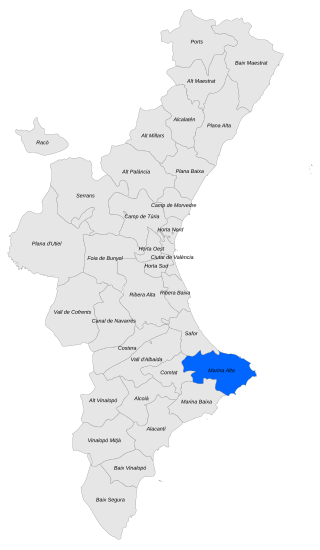
Marina Alta is a central and coastal comarca of the autonomous community of Valencia, Spain. The comarca is located in the area of Alicante and its capital and largest settlement is the city of Dénia.
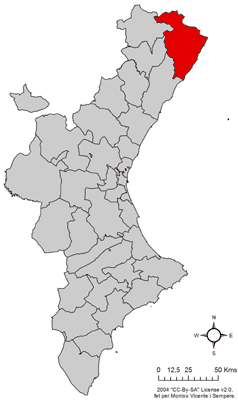
Baix Maestrat is a coastal comarca located in the north of the province of Castellón, Valencian Community, Spain. The capital of the comarca is Vinaròs.
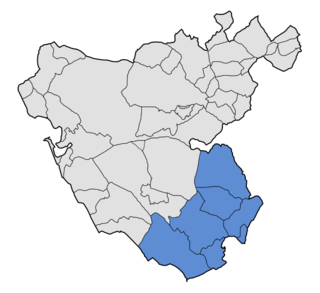
Campo de Gibraltar is a comarca (county) in the province of Cádiz, Spain, in the southwestern part of the autonomous community of Andalusia, the southernmost part of mainland Europe. It comprises the municipalities of Algeciras, La Línea de la Concepción, San Roque, Los Barrios, Castellar de la Frontera, Jimena de la Frontera and Tarifa.
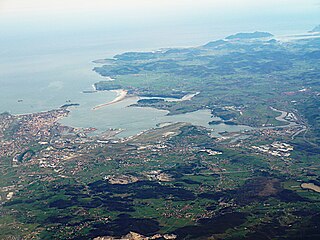
The Bay of Santander is both a comarca of Cantabria and the largest estuary on the North coast of Spain, with an extension of 22.42 km2. Due to the influence of Santander and its metropolitan area, nearly half of the population of the autonomous community of Cantabria is gathered around it, which makes the anthropic pressure on this area of water quite notable.
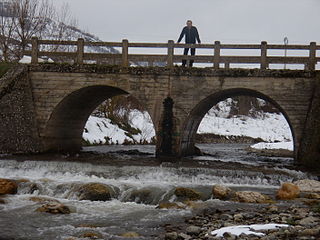
San Vicente del Valle is a municipality and hamlet located in the province of Burgos, Castile and León, Spain. The municipality is in the comarca of Sierra de la Demanda. In addition to the hamlet of San Vicente del Valle, since 1857 the municipality has included the hamlet of Espinosa del Monte.

Valdemoro is a municipal district, located in the Southern zone of the autonomous community of Madrid, Spain. Located 27 kilometers from the capital, Valdemoro is officially part of the comarca of La Sagra, though it is generally also included in the Madrid metropolitan area.
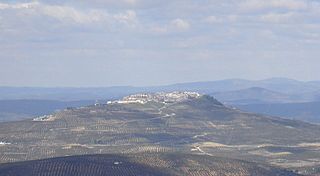
Las Villas is a natural region and comarca in Andalusia, southern Spain. It is located in the mountainous area at the eastern end of Jaén Province. The main town is Villacarrillo.

The Region of Murcia is an autonomous community of Spain located in the southeastern part of the Iberian Peninsula, on the Mediterranean coast. The region is 11,313 km2 (4,368 sq mi) in area and had a population of 1,511,251 as at the start of 2020. About a third of its population lives in the capital, Murcia, and a seventh in the second city, Cartagena. At 2,014 m (6,608 ft), the region's highest point is Los Obispos Peak in the Massif of Revolcadores.

Poniente Almeriense is a comarca in Almería, Spain. It is sometimes also known as the "sea of plastic" due to the numerous greenhouses that cover the area. The comarca contains ten municipalities and 259,357 inhabitants in an area of 971 km2. The "sea of plastic" was one of the subjects of We feed the world, a 2005 documentary; and the setting of Spanish crime drama Mar de plástico.
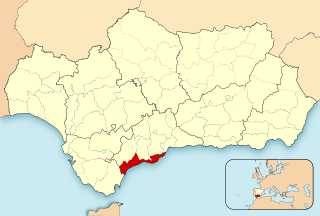
Costa del Sol Occidental is a comarca (county) in Andalusia, southern Spain.
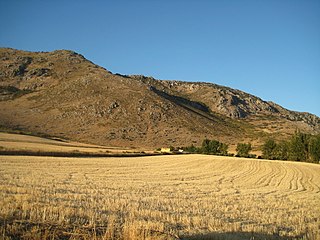
The Comarca de Antequera is a comarca in Andalusia, southern Spain.

Cartagena is a Spanish city and a major naval station on the Mediterranean coast, south-eastern Iberia. As of January 2018, it has a population of 218,943 inhabitants. This makes Cartagena Murcia's second-largest municipality and Spain's sixth-largest city that is not a provincial-capital. The wider urban or metropolitan area of Cartagena, known as Campo de Cartagena, has a population of 409,586 inhabitants.
